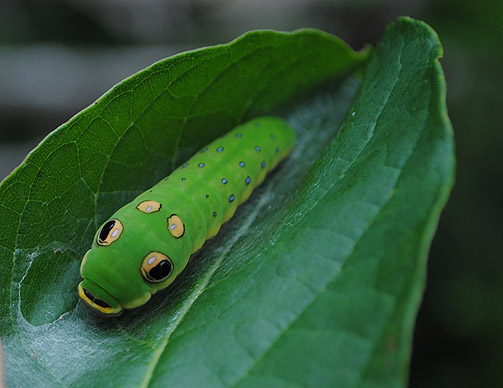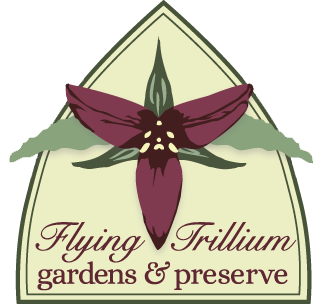Backyard Politics: Creating Gardens of Impact and Change
Kate Brittenham
As we begin preparing for the spring, excitedly scrolling through plant availability lists from our favorite nurseries and planning trips to the local garden center, we should take this season to look to our gardens as symbols of change and impact. With the current political climate in Washington, you may be feeling a little helpless, but there is one thing that we can do with our gardens this year to have a real impact on the world around us.
Let’s talk about the pollinators—those organisms with whom we are ecologically intricately linked, but who we now find imperiled. With habitat vanishing due to development and the introduction of pesticides which have devastating impacts on specific species, pollinators are under duress. To bring attention to the plight of pollinators like bees, flies, butterflies, birds, the Association for Garden Communicators (GWA) has partnered with the National Pollinator Garden Network to promote their initiative: the Million Garden Pollinator Challenge. The goal of the initiative is to “increase nectar- and pollen-providing landscapes” in order to counteract the decrease in habitat. The ultimate intent of the Challenge is to “promote and count 1 million pollinator forage locations across North America.
And if you’ve been feeling downtrodden lately with politics, planting for pollinators and advocating on their behalf is something positive that you can easily do to have a real impact. Remember that pollinators do not have a voice of their own—it is our responsibility to ensure that they are protected too.
So what can we do?
First, let’s start by creating pollinator habitats in our own gardens. And why stop there? Let’s start pollinator gardens at our community gardens, our schools, and push our town boards and administrators to incorporate pollinator habitat into town planning and landscaping. By creating these “corridors” of habitat, we can help protect pollinators.
We have created a list of our “Top 15 Pollinator Plants,” including their pollinator counterparts. And each day going forward, we will be releasing a brief profile on each of these plants for the duration of the Million Pollinator Garden Challenge which is being celebrated until April 28th. We mark the beginning with today’s profile of Lindera benzoin, or Spicebush. You can find that profile at the bottom of this entry.
In addition to actively creating pollinator landscapes, here are some more actions you can take:
- Talk to your local garden centers. That includes the Agways, Walmarts, Lowe’s, Home Depots in your area. It is really important that they hear from you, the consumer. Consumer power is strong in the corporate world. Businesses do listen when consumers take the time to air their concerns—especially if they hear from enough of them.
- Write to your editor. A short, to-the-point, well-worded letter is great for keeping pollinators in the news and in people’s thoughts.
- Talk to your garden friends and neighbors. Education is key, and when it comes from a friendly face, a message has a greater chance to have an impact.
- Following that line of thought, offer to lead a workshop with your garden club, 4-H or Scout Troop, or at the local library.
- Talk to your schools and get the teachers involved, if they aren’t already. Create a Pollinator Week. Have students raise butterflies in classrooms and plant pollinator habitat. The possibilities are limitless!
- Talk to your local Planning Board. Or better yet, join it! Become an activist for native habitat in all municipal landscaping.
- And finally, head to the Million Pollinator Garden Challenge website (http://millionpollinatorgardens.org) and
- Register your garden as a pollinator habitat
- Upload a photo of your garden. You will be asked to fill in some other necessary information
- Where you’re asked to indicate “Your Organization/Partnership Affiliation,” select “The Association for Garden Communicators.”
Most importantly, think outside the box! There are plenty of ideas we have not listed here—if you have an idea you did not see here, that does not mean you should not try it! Remember, the pollinators cannot advocate for themselves. They need your help.
Lindera benzoin (Spicebush)

A truly wonderful early bloomer, Lindera benzoin (Spicebush) is our first introduction to great pollinator plants. It is named for the scent of its leaves, that when crushed, emit a subtle aroma, as does the bark. Classified as either a shrub or small tree, Lindera is an understated beauty of the woodlands, blooming at the same time as the flashy forsythia, for which it makes an excellent substitute. The softer yellow flowers of spicebush are, like hollies, dioecious, meaning that only the female plants, after receiving pollen from male plants, produce red berries in the fall.
Lindera prefers moist soils, and is typically found in wetlands: in floodplains and alongside bodies of water. Though it can take full sun, it can only do so when the soil is constantly moist. It is ideally suited to shady, wet areas, and makes an excellent buffer plant for riparian zones. Because of their gentle branching form, they appear best as a landscape plant in groups of three or more.
A member of the Lauracea family, Lindera has been used historically for multiple uses. Known by names such as “spicewood” and “wild allspice,” Lindera has been used for medical, culinary, fragrance purposes. American Indian tribes used the leaves, twigs, and berries for medicinal teas, and soldiers during the American Revolution used the berries as a substitute for allspice. Lindera tea was even used during the Civil War as a substitute for coffee.
For pollinators, Lindera benzoin is very important. In the spring, early bees, flies and butterflies are attracted to the flowers, which bloom earlier than many other species. The autumn berries of the Spicebush also provide an important food source for squirrels and birds. The berries are high in fats, important fuel for migrating birds.

Because of specific chemical compositions found in Lindera, most mammalian predation is discouraged, but caterpillars are frequent visitors. The Papilio troilus (Spicebush Swallowtail) relies on Lindera: the butterflies lay their eggs on the leaves, which once the larvae hatch, they consume as they move through their lifecycle. A caterpillar with a lot of character, the Papilio caterpillar’s green skin blends in perfectly with Lindera’s leaves. Its most distinct feature are the “eyes”: large black markings that mimic the heads of snakes. The Papilio troilus has even been known to “rear up” in imitation of a snake when threatened.

As a landscape plant, Lindera benzoin is a fabulous addition to any garden: it is a very easy plant to grow, (provided it is sited in its ideal conditions of moist, wet soils), and provides early spring interest before most species come out. For that reason, it is also an important addition to gardens from the pollinator perspective; as gardeners, we have an opportunity to have a beneficial impact on the environment around us. Because there is a limited number of blooming plants at this time, planting species such as Lindera benzoin is all the more important for pollinators searching for food, and is something we can easily do in our gardens.

If you are interested in learning more about the history of Lindera, the Wild Seed Project has an excellent in depth post on their blog.
References:
“L. benzoin, northern spicebush.” New England Wild Flower Society. <https://gobotany.newenglandwild.org/species/lindera/benzoin/>
Johnson, Pamela. “Lindera Benzoin. Spicebush. Lauraceae.” Wild Seed Project. May 2016. <http://wildseedproject.net/2016/05/lindera-benzoin-northern-spicebush-lauraceae/>
Murphy, Cindy. “American Spicebush: An Understated Beauty with History.” Grit. May/June 2008. <http://www.grit.com/farm-and-garden/american-spicebush>
Sheets, Jason. “April Plant of the Month: Lidnera Benzoin, Spicebush.” New York Restoration Project. April 3, 2015. <https://www.nyrp.org/blog/april-plant-of-the-month-lindera-benzoin-spicebush>
“Field Notes from the Beiser Field Station: October 7, 2008.” Marietta College, Biology Department. <http://w3.marietta.edu/~biol/biomes/spicebush.htm>
